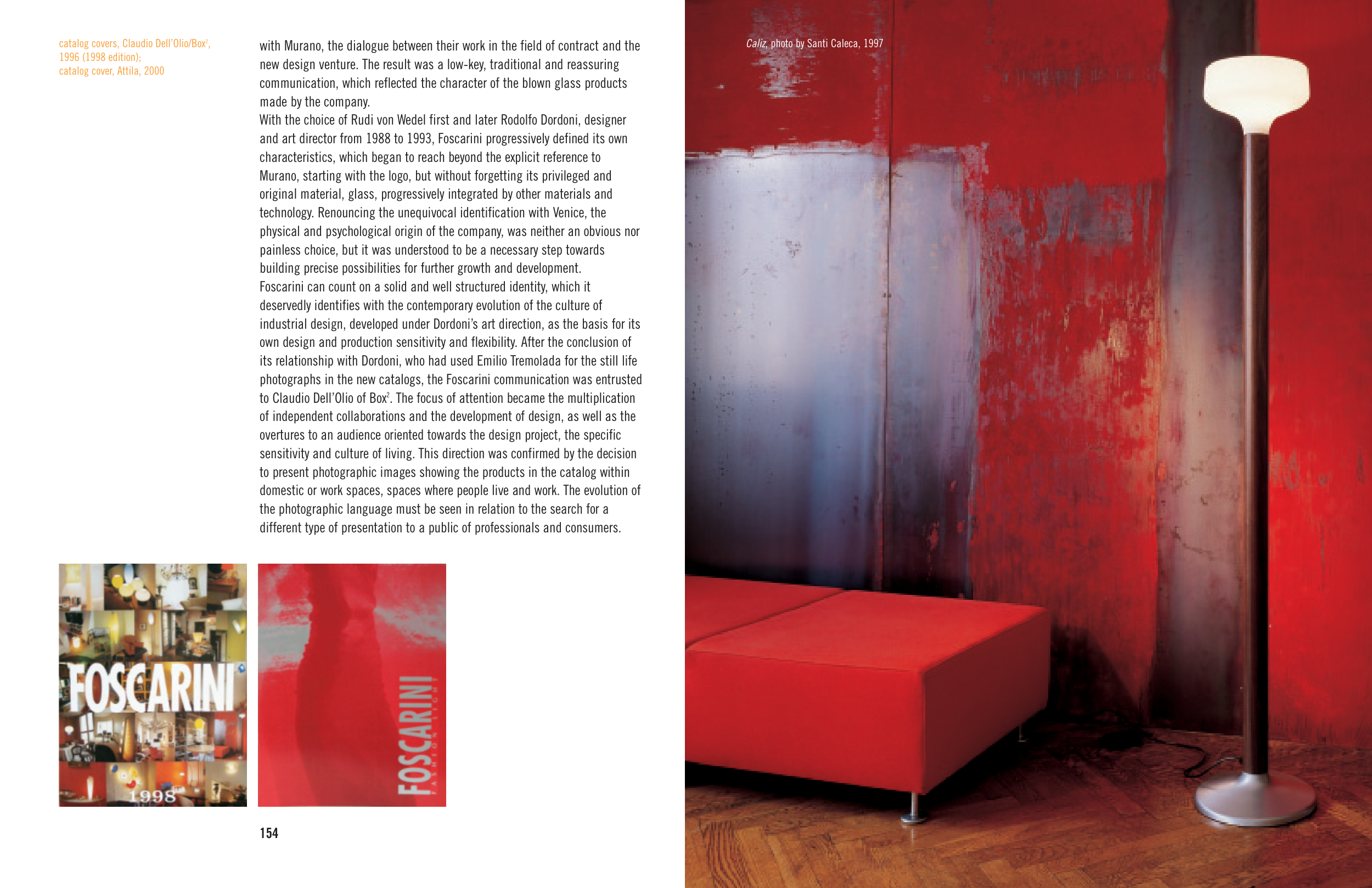154
Caliz, photo by Santi Caleca, 1997
with Murano, the dialogue between their work in the field of contract and the
new design venture. The result was a low-key, traditional and reassuring
communication, which reflected the character of the blown glass products
made by the company.
With the choice of Rudi von Wedel first and later Rodolfo Dordoni, designer
and art director from 1988 to 1993, Foscarini progressively defined its own
characteristics, which began to reach beyond the explicit reference to
Murano, starting with the logo, but without forgetting its privileged and
original material, glass, progressively integrated by other materials and
technology. Renouncing the unequivocal identification with Venice, the
physical and psychological origin of the company, was neither an obvious nor
painless choice, but it was understood to be a necessary step towards
building precise possibilities for further growth and development.
Foscarini can count on a solid and well structured identity, which it
deservedly identifies with the contemporary evolution of the culture of
industrial design, developed under Dordoni’s art direction, as the basis for its
own design and production sensitivity and flexibility. After the conclusion of
its relationship with Dordoni, who had used Emilio Tremolada for the still life
photographs in the new catalogs, the Foscarini communication was entrusted
to Claudio Dell’Olio of Box2. The focus of attention became the multiplication
of independent collaborations and the development of design, as well as the
overtures to an audience oriented towards the design project, the specific
sensitivity and culture of living. This direction was confirmed by the decision
to present photographic images showing the products in the catalog within
domestic or work spaces, spaces where people live and work. The evolution of
the photographic language must be seen in relation to the search for a
different type of presentation to a public of professionals and consumers.
catalog covers, Claudio Dell’Olio/Box2,
1996 (1998 edition);
catalog cover, Attila, 2000


